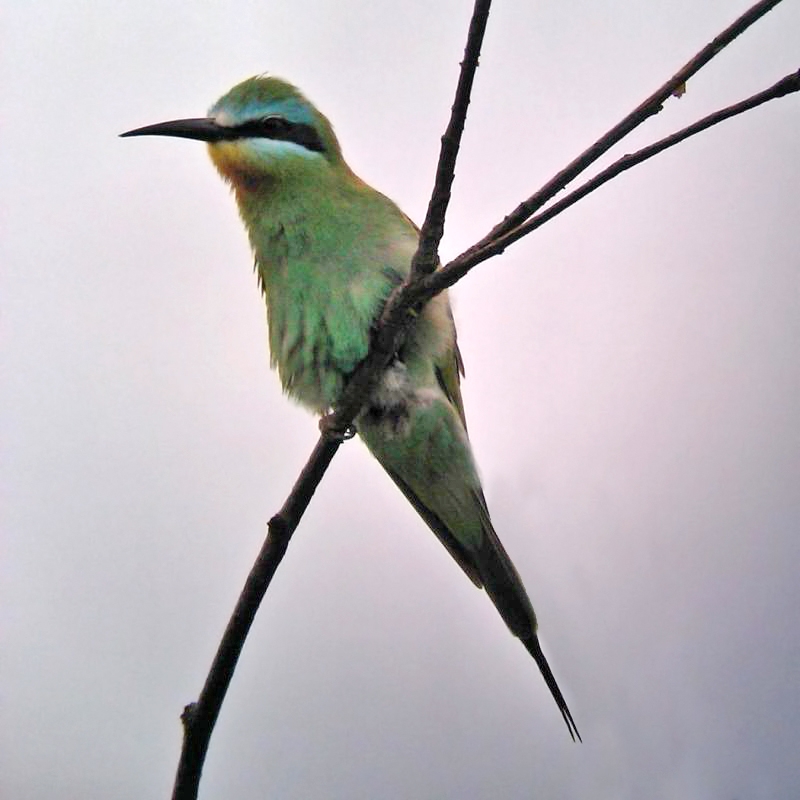
On Monday 16 August 2010 Hans Schekkerman was at the ringing station at Castricum. At around 10:30 hours, while luring shorebirds, he heard a sound most reminiscent of a Greater Sand Plover Charadrius leschenaultii. It turned out to be a bee-eater merops spec, so he played the sound of a Bee-eater Merops apiaster. The bird came closer and showed its bright orange-brown underwings and it turned out to be a Blue-cheeked Bee-eater Merops persicus! He warned André van Loon, who in turn warned Enno Ebels, who subsequently put the news at 11:00 hours on the Dutch Birding Alert System. Now birders came from everywhere and the bird showed itself very well. Just after 14:00 hours, it started to circle higher and higher and was finally lost in southwestern direction. Max Berlijn, Roy de Haas and Anja Nusse were just in time and could see the bird for just a minute, but others were just too late. Sadly, it could not be relocated again.
The bird was most probably a male (long tail-feathers) of the eastern subspecies persicus (amount of white on the cheeks, but there is overlap with chrysocercus).


It was accepted as the third record for the Netherlands. Previous records were on 30 September 1961 at the Cocksorp, Texel NH and on 18 May 1998 at the Noordvaarder, Terschelling Fr. For an excellent article about the occurrence of Blue-cheeked Bee-eater in Western Europe, see
Dutch Birding 16 (3): 95-101, 1994.
Go to the main-index, the 2010-index or the next new species, Northern Waterthrush?